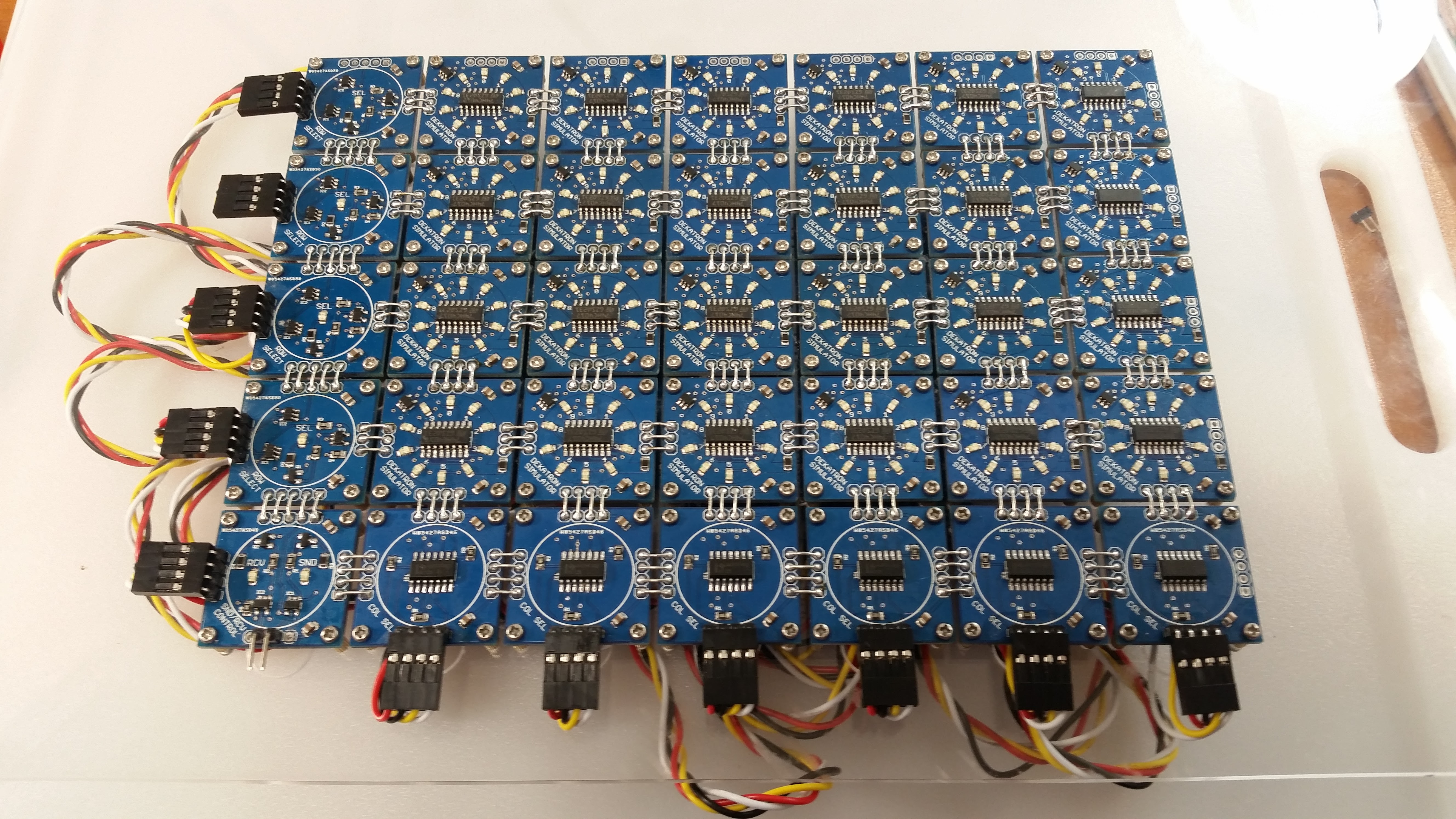
The essential technology at the heart of the Harwell WITCH is the Dekatron. The Dekatron, as the name implies is basically a decade counter, and while many variations of the Dekatron are still available via places like Ebay, using them in the WITCH-E project was not economical, not practical, and generally not safe due to the high voltages needed to operate them. So what I needed was something that could replicate the functionality of a Dekatron. Something made with modern components, something that would be inexpensive to build (since I would need to build a LOT of them!), and something that was easy to assembly by hand. The first task was to find components that matched the functionality of the Dekatron as they were used on the WITCH. Dekatrons support the ability to increment their stored count as well as decrement the stored count, however in the WITCH the Dekatrons were only used to increment the stored count, so I focused on finding something that only supported incrementing. My first prototypes used a 74HC160 decade counter with BCD (Binary Coded Decimal) output connected to a 74HC4511 BCD to 7-segment display. This version was rather large, used two chips and needed 8 resistors, plus it just didn't "feel right". The 7-segment display gave a really good educational aspect to the design, but just didn't have the same "feel" as the circular Dekatrons, so I went back to the drawing board. Again since I only needed the ability to increment, I selected the 74HC4017, a TTL version of the popular CMOS CD4017 decade counter. On the first revision using the 74HC4017, I placed the LEDs on the front, with the 74HC4017 on the back of the board, making it a two sided assembly. My thinking was since I was hand assembling these, having a two-sided assembly wouldn't matter much... boy was I wrong! It really complicated the assembly process and made it very time consuming. So on the next revision of the design, I went with all single sided assembly. While having the 74HC4017 in the center does take away from the aesthetics on an individual PCB, the overall results for an assembled group are generally geeky enough to over look this minor issue...

 Dave's Dev Lab
Dave's Dev Lab
Discussions
Become a Hackaday.io Member
Create an account to leave a comment. Already have an account? Log In.